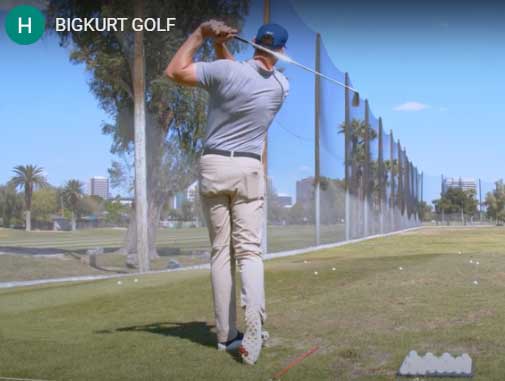
Your Hip is Killing Your Game
Your Hip is Killing Your Game https://hip-replacement.info/wp-content/uploads/2020/06/Golfer-Swinging-After-Hip-Surgery.jpg 505 381 teamhri teamhri https://secure.gravatar.com/avatar/0641286428e191b5da15eb0bafa1288b?s=96&d=mm&r=gAthletes, generally speaking, are people who are more familiar than most others with pain. Sore muscles, knees and sprained ankles come with the territory of making active, repetitive movements and are usually accepted as a necessary evil among the many joys competition otherwise has to offer. But where is the line between playing hurt and playing injured? When does playing through the pain begin to pain your game and when is it time to consider medical intervention such as a minimally invasive hip replacement surgery?
Sometimes it can be hard to tell when the love of the game is jeopardizing our ability to ever play it again. Golf has no contact and requires no running, so perhaps more than other sports it’s possible to play in less than peak physical condition. When a tennis player blows a knee or someone on a basketball court has a hip go out it is immediately obvious there is something wrong and they cannot continue to play. The problem when it comes to golf is that you can technically play it in all sorts of physical conditions. It is really easy to accept physical limitations as they arise and start to slide down the slippery slope of diminishing performance as they start to accrue on top of one another. It starts as maybe tightness in your lower back or a little bit of stiffness in your hip. You’re still able to play, but not quite as well.
Before you know it, you can’t really rotate your hips though a swing anymore and the ball carries thirty, forty even fifty yards less than it used to! On top of a deteriorating game you’re probably confined to a cart. Because of the pain emanating from your degenerating hip, walking a full eighteen is a distant memory. Have you been accepting or compensating for physical limitations in your game? In an ideal world you have a swing coach who keeps details of your progression on file, but some of us aren’t so lucky and will have to go back into our own memories for answers. So, be objective; have you recently shortened your backswing? Having trouble getting all the way through your follow through? These are subtle changes that allow you to swing away from pain. It’s one thing to be uncomfortable during a round but to actively perform a motion that causes pain? It is too much to ask so players naturally compensate.
The thing about these changes is that they can work as short-term band-aids. Kurt Brown, PGA. says, “We can always limit a golf swing away from pain, but we don’t need to. The limitations Coach Brown was referring to earlier are breaks and swing changes that can be done to limit the range of motion and decrease the uncontrolled speed through the downswing. These adjustments reduce the player’s exposure to the pain associated with grinding a worn-out joint in an uncomfortable direction. Coach Brown continues, “the reason people get hip replacement surgery is to increase range of motion and decrease pain.”
In addition to eliminating the root cause of the pain, a minimally invasive hip replacement surgery will radically increase the range of motion available in a player’s hip. Whereas pain limits speed and power, an increased range of motion increases speed and power! The implants used today are made of a titanium socket with a plastic liner that houses a ceramic ball, these are cutting edge devices that are rated for forty years of use. If the pain in your hip prevents you from being active and enjoying the things you would like to be doing in your life then it is time to consider minimally invasive hip replacement surgery.
- Posted In:
- Hip Replacement
